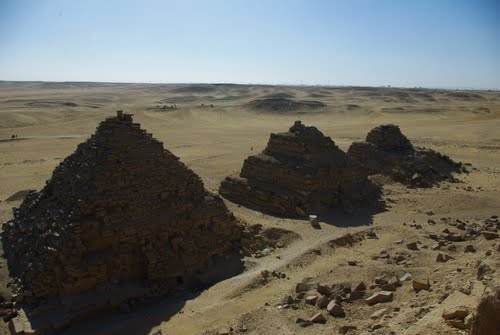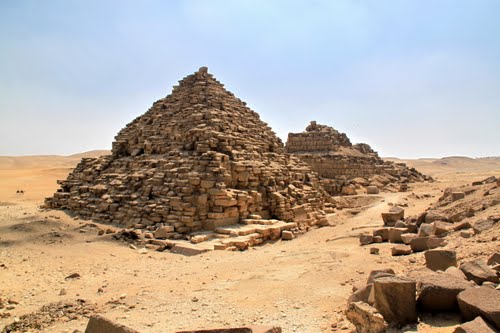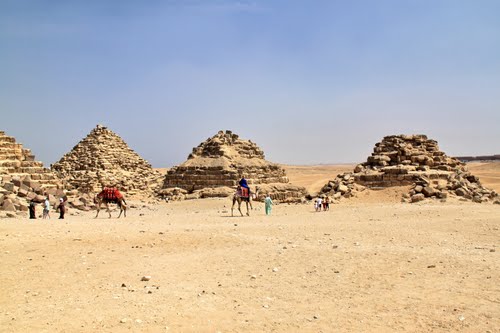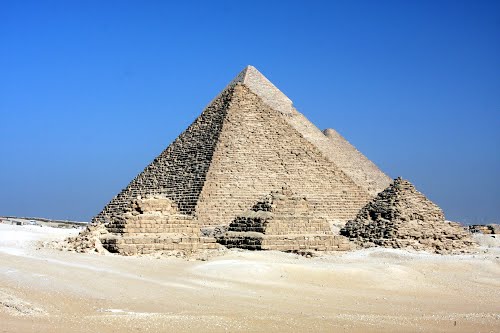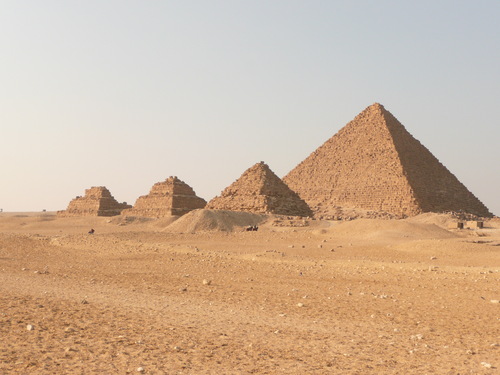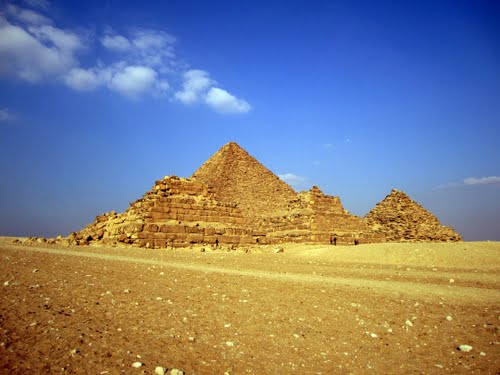Three Queen's Pyramids, G 3a Pyramid. Notable on the Giza Plateau are the three much smaller subsidiary that stand in a row along the south wall of the principal pyramid. Designated G 3a-c, archaeologist attribute them to Menkaure's royal consorts. Of these, only G 3a was a true pyramid, the other two having a four step core, and some Egyptologists believe that it functioned as a cult pyramid, though it was also clearly used for a burial. All three of these pyramids were surrounded by a common perimeter wall.
G 3a, the easternmost, of these pyramids, actually had a small, east-west oriented mortuary temple of its own that was accessible from it's pyramid's courtyard. This mortuary temple was probably partially built of limestone, but was hastily finished with mudbrick. The west end of the mortuary temple was dominated by a fairly large, open courtyard that had niches built into its northern wall. On its south side was a row of wooden columns. A small cult chapel with an entrance adorned with deep, double niches to either side, lead into an offering room that included a false door. storage annexes were located in the northwest part of the temple, and in the southwest a staircase led to the roof terrace.
Pyramid G 3a was the largest of the three constructs, with an entrance situated in the middle of the north wall, only a little above ground level. It has a substructure consisting of a burial chamber dug from the rock under the center of the pyramid's base, which communicates with a descending entrance corridor equipped with a barrier. This burial chamber was originally equipped with a pink granite sarcophagus, embedded in the floor next to the west wall. Unfortunately, it soon fell prey to tomb robbers. There were also fragments of ceramics and charred remains of wood and matting found in this chamber.
We really have little idea who was interred in Pyramid G 3a. Reisner thought that it might be Menkaure's principal consort, Khamerernebti II, but based on a statue of that queen found in the so-called Galarza tomb in the central part of the Giza necropolis, others believe that she was buried alongside her mother, Khamerernebti I in that tomb. In fact, it is not impossible that this pyramid was originally simply a cult pyramid that was latter transformed into a tomb.
Besides being smaller, and lacking the shape of a true pyramid, G 3b also differs in other details. These include the placement of the descending corridor, which lacks a barrier. The bones of a young woman were found in the pink granite sarcophagus which stood against the west wall of the burial chamber that was located under the northwest part of the pyramid. Like G 3a, it also had a small mortuary temple, though in this case it was oriented north-south.
G 3c was never completed with its casing. Like G 3b, the burial chamber was constructed under the northwest part of the pyramid, and was likewise not finished. Though no burial was found within this pyramid, there was clear evidence of a cult following in the small mortuary temple that stood in front of the east side of this pyramid. Also like G 3b, this mudbrick structure was oriented north-south.
Unfortunately, the owners of G 3b-c are completely lost to us and may never be known. We are relatively certain that they were consorts of Menkaure, but otherwise there no information on these royal women.

